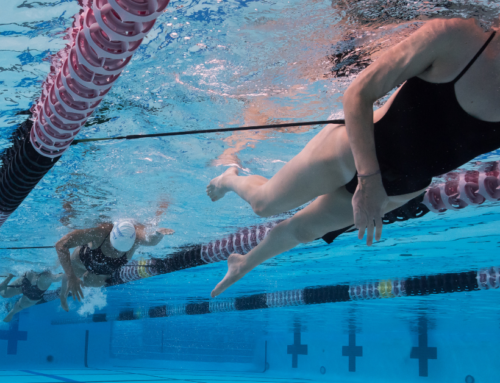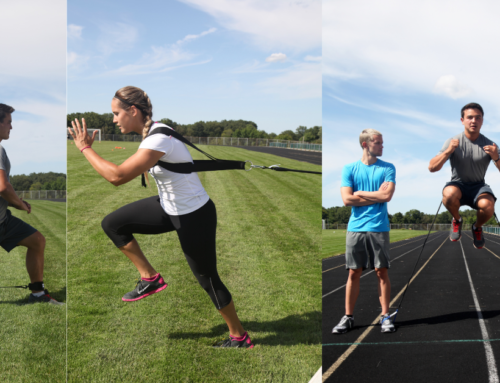Rotator cuff injuries are a common concern among athletes, especially those engaged in sports that involve repetitive shoulder movements. The rotator cuff is a group of four muscles and their associated tendons that stabilize the shoulder joint, allowing for a wide range of motion. When these muscles or tendons are damaged, it can lead to pain, weakness, and decreased performance.
Athletes Prone to Rotator Cuff Injuries
Certain athletes are more susceptible to rotator cuff injuries due to the nature of their sports. These include:
- Baseball and Softball Players: Pitchers, in particular, are at high risk due to the repetitive overhead throwing motion, which puts significant stress on the shoulder.
- Swimmers: The repetitive overhead arm movements in strokes like freestyle, butterfly, and backstroke can lead to overuse injuries in the rotator cuff.
- Tennis Players: Serving and hitting overhead shots can strain the shoulder muscles and tendons, increasing the risk of injury.
- Weightlifters: Heavy lifting, especially with poor form, can cause rotator cuff injuries due to the high demands placed on the shoulder joints.
- Volleyball Players: The repetitive spiking and serving motions can lead to wear and tear of the rotator cuff.
Preventing Rotator Cuff Injuries with Resistance Cord Exercises
Resistance cord exercises are effective in strengthening the muscles around the shoulder, enhancing stability, and preventing injuries. Here are some key exercises:
1. External Rotation
- How to Perform: Attach the Cuff Tuff to your foot. Stand with your side facing the attachment point and hold the handle with the arm farthest from the attachment. Keep your elbow at a 90-degree angle and rotate your arm outward, away from your body.
- Benefits: This exercise targets the infraspinatus and teres minor, which are essential for external rotation and shoulder stability.
2. Internal Rotation
- How to Perform: Attach the resistance cord similarly as for external rotation. Stand with your side facing the attachment point, but this time hold the handle with the arm closest to the attachment. Keep your elbow at a 90-degree angle and rotate your arm inward, toward your body.
- Benefits: This exercise strengthens the subscapularis, which is crucial for internal rotation and overall shoulder health.
3. Shoulder Abduction
- How to Perform: Stand on the resistance cord with both feet and hold the handles. With your arms at your sides, lift them outward to shoulder height, keeping your elbows straight.
- Benefits: This exercise works the supraspinatus muscle, which is involved in lifting the arm and stabilizing the shoulder joint.
4. Scapular Retractions
- How to Perform: Attach the resistance cord to a stable object at shoulder height. Hold the handles with both hands and step back to create tension. Squeeze your shoulder blades together as you pull the handles towards you, keeping your arms straight.
- Benefits: This exercise strengthens the rhomboids and middle trapezius muscles, which are important for scapular stability and overall shoulder function.
Rehabilitating Rotator Cuff Injuries with Resistance Cord Exercises
If an injury does occur, resistance cord exercises can also be used for rehabilitation. The goal is to gradually restore strength and flexibility while avoiding further damage.
1. Low-Resistance Internal and External Rotations
- How to Perform: Use a light resistance cord and perform the same internal and external rotation exercises described above. Start with minimal resistance and gradually increase as strength improves.
- Benefits: These exercises help restore strength and function to the rotator cuff muscles without placing excessive strain on the injured tendons.
2. Scapular Stability Exercises
- How to Perform: Perform scapular retractions with light resistance. Focus on slow, controlled movements and proper form.
- Benefits: Strengthening the muscles around the scapula aids in stabilizing the shoulder, which is crucial for recovery.
3. Flexion and Extension with Light Resistance
- How to Perform: Attach the resistance cord to a stable object at waist height. Hold the handle with your injured arm and, keeping your elbow straight, lift your arm forward (flexion) or backward (extension) to shoulder height.
- Benefits: These exercises help improve the range of motion and strength in the shoulder muscles, aiding in the rehabilitation process.
Conclusion
Rotator cuff injuries can be debilitating for athletes, but with proper prevention and rehabilitation strategies, such as resistance cord exercises, athletes can reduce their risk and recover effectively. Consistent strengthening of the shoulder muscles and maintaining good form during sports activities are key to preventing these injuries and ensuring long-term shoulder health. By incorporating these exercises into their training regimen, athletes can enhance their performance and safeguard their shoulders from injury.





